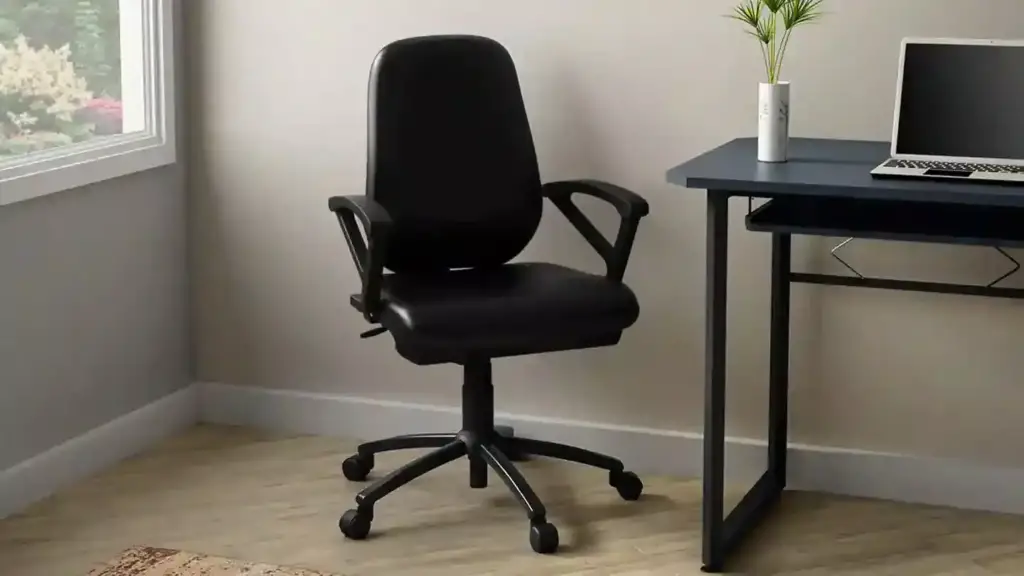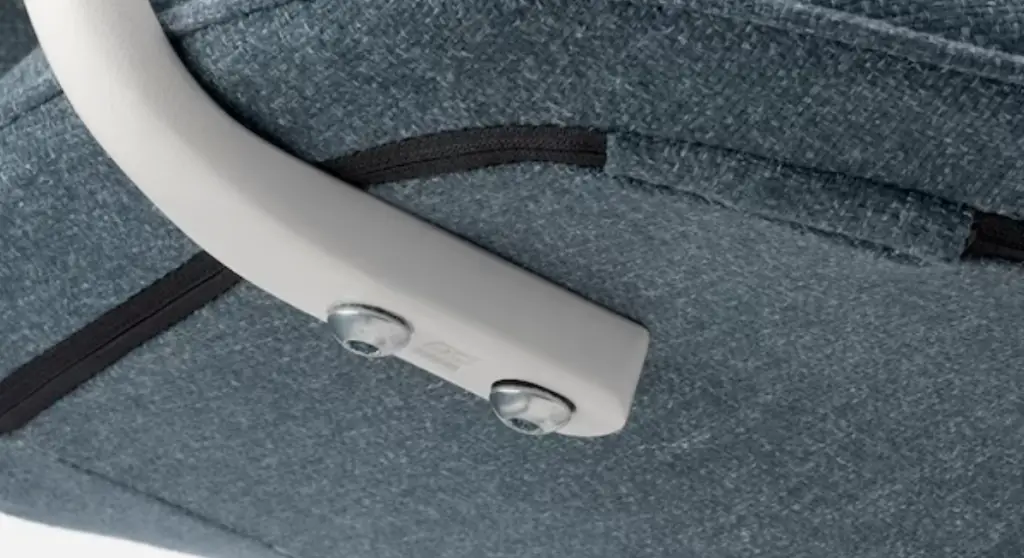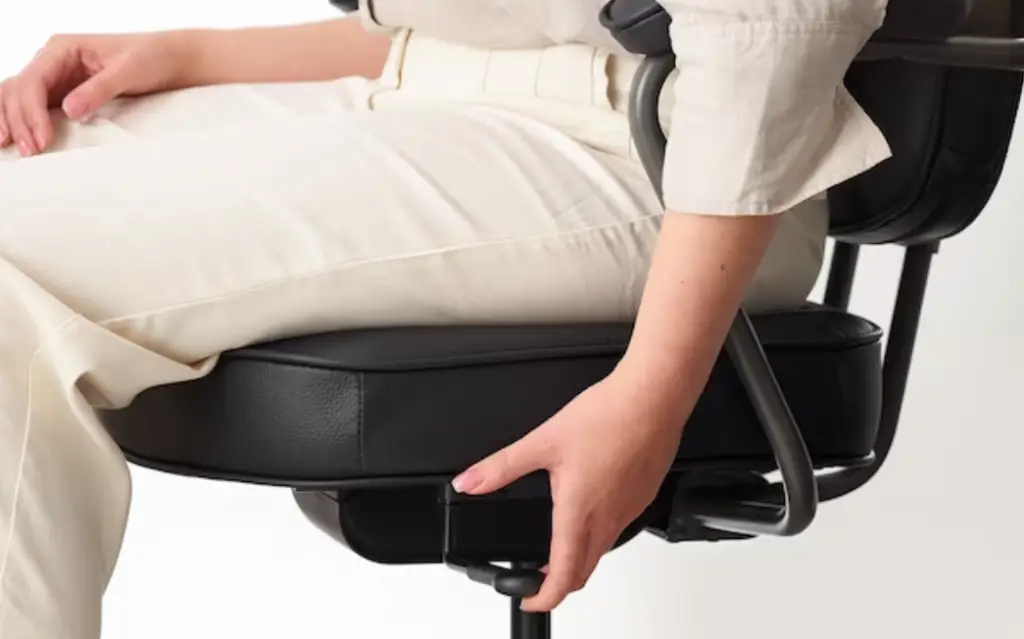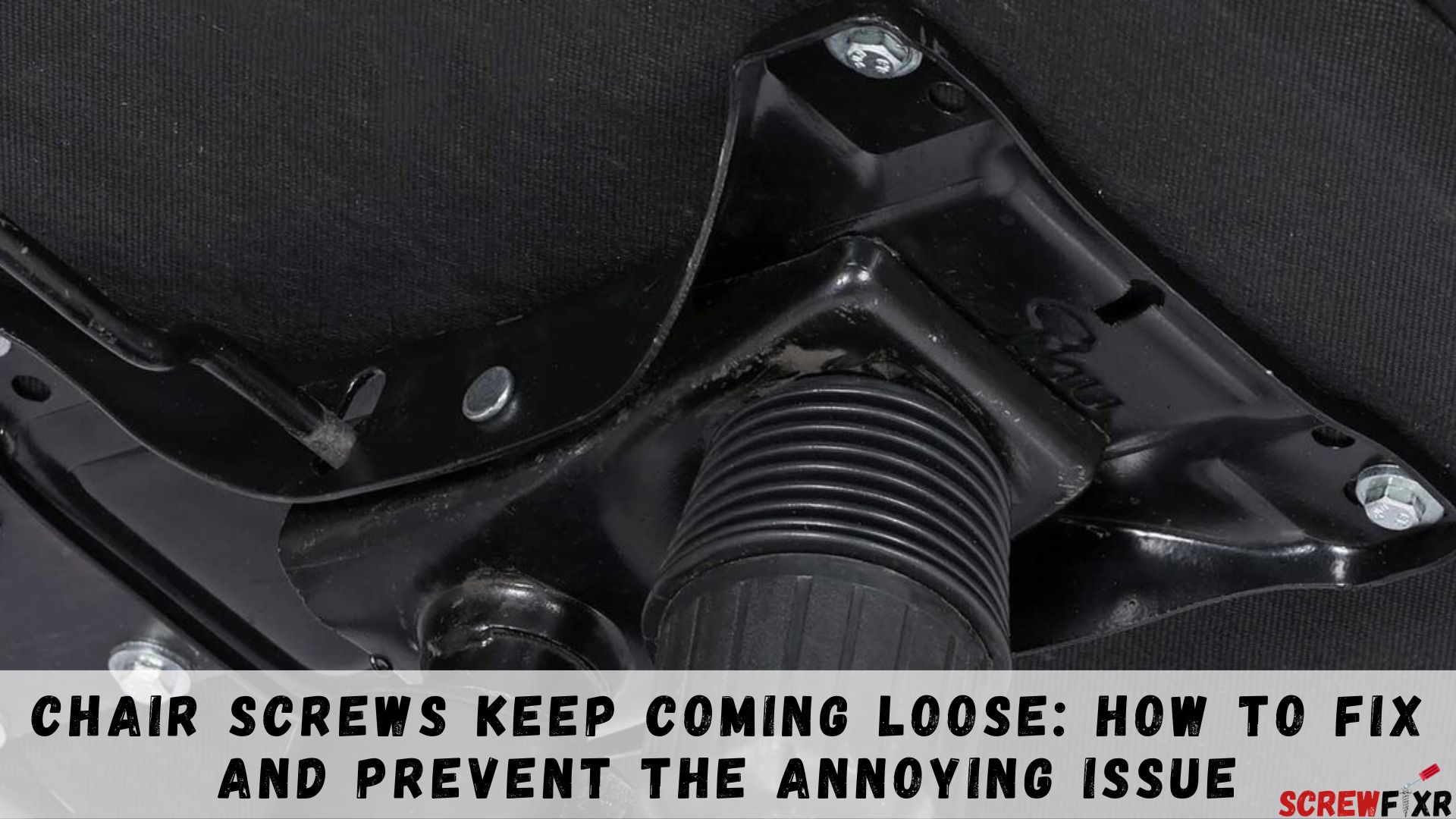Chair Screws Keep Coming Loose: How to Fix and Prevent the Annoying Issue
Are you tired of the never-ending battle with your wobbly chairs? Chair screws keep coming loose is a common annoyance, but fear not! In this comprehensive guide, we will explore the causes behind chair screws coming loose and provide you with practical solutions to put an end to this problem once and for all.
Chair Screws Keep Coming Loose: Why Do Chair Screws Come Loose?

Chair screws coming loose can be a frustrating and recurring issue, but understanding the underlying causes is the first step in solving the problem. Here are the common reasons behind chair screws coming loose:
- Low-Quality Screws and Materials:
- One of the primary culprits behind loose chair screws is the use of low-quality screws and materials during the chair’s manufacturing process.
- Cheap or subpar screws can’t provide the necessary grip and stability, leading to gradual loosening over time.
- Chairs made from inexpensive materials may not provide a solid foundation for the screws to hold onto.
- Frequent Use and Movement:
- Chairs are subjected to constant use and movement, especially in busy households or offices.
- The repeated stress and pressure applied to the chair can gradually cause screws to come loose, even if they were initially well-secured.
- Swiveling, rocking, or leaning back in a chair can accelerate this wear and tear.
- Environmental Factors:
- Environmental factors can play a significant role in loosening chair screws.
- Humidity and temperature fluctuations can cause wood to expand and contract, affecting the grip of screws.
- Exposure to direct sunlight or moisture can degrade materials, making them less stable.
- Incorrect Assembly:
- Sometimes, loose chair screws are the result of incorrect assembly during manufacturing or home assembly.
- If the screws are not tightened properly at the outset, they are more likely to work themselves loose over time.
- Additionally, using the wrong type or size of screws during assembly can lead to instability.
Understanding these underlying causes is crucial because it allows you to take proactive measures to prevent chair screws from coming loose in the future.
The Consequences of Loose Chair Screws
While it might be easy to dismiss loose chair screws as a minor inconvenience, they can lead to a range of significant consequences, both in terms of safety and comfort. Here are the potential dangers and inconveniences caused by loose chair screws:
- Safety Hazards:
- Loose chair screws pose a significant safety hazard. When the structural integrity of a chair is compromised, it can lead to accidents and injuries.
- Chairs with wobbly or unstable legs may tip over, causing individuals to fall and potentially suffer injuries like sprains, bruises, or fractures.
- In workplaces, loose chair screws can lead to costly workers’ compensation claims and decreased productivity due to accidents.
- Structural Damage:
- Beyond safety concerns, loose chair screws can result in structural damage to the chair itself. Over time, this can render the chair unusable.
- When screws are not securely fastened, they create stress points on the chair’s frame and joints. This stress can cause cracks or fractures in the wood or metal components.
- If left unaddressed, the structural damage may necessitate costly repairs or even chair replacement.
- Annoyance and Discomfort:
- Loose chair screws can be a continual source of annoyance and discomfort for users.
- Chairs that wobble or make noise due to loose screws can be distracting and disrupt concentration, especially in office settings.
- At home, chairs that are uncomfortable to sit in can negatively impact relaxation and leisure time.
The consequences of loose chair screws extend beyond mere inconvenience. Safety hazards and potential damage to both the chair and individuals using it underscore the importance of addressing this issue promptly. In the following sections, we will explore how to identify loose screws and provide effective solutions for tightening or replacing them, ensuring that your chairs remain safe and comfortable.
Identifying Loose Chair Screws
Before you can address the issue of loose chair screws, it’s essential to know how to identify them. There are two primary methods for identifying loose chair screws:
- Visual Inspection:
- Begin by conducting a visual inspection of the chair. This can be done without any tools or physical manipulation.
- Look closely at the screws, especially those that connect the legs or other structural components to the seat or backrest.
- Pay attention to any gaps or spaces between the screw heads and the chair’s surface. If the screw heads are not flush with the chair’s material, it’s a sign that they may be loose.
- Additionally, check for any visible signs of damage or wear around the screw holes, such as cracks or splintered wood. This can indicate that the screws have become loose over time.
- Physical Wobbling:
- Another way to identify loose chair screws is through physical inspection. Sit in the chair and pay close attention to how it feels.
- Gently rock or shift your weight in the chair, focusing on whether it wobbles or feels unstable.
- If you notice any wobbling, creaking, or uneven balance, it’s a strong indication that one or more screws may be loose.
- Take note of which part of the chair seems less stable, as this will help you pinpoint the problem area.
By using both visual inspection and physical testing, you can effectively identify loose chair screws. Once you’ve determined which screws are causing the issue, you can proceed with the necessary steps to tighten or replace them, ensuring that your chair is safe and secure for use.
Tools You’ll Need
To effectively address the problem of loose chair screws, you’ll need a few essential tools to ensure a secure and lasting fix. Here’s a list of the tools you’ll need:
- Screwdriver:
- A screwdriver is a fundamental tool for tightening or removing screws. Depending on the type of screws used in your chair, you may need either a flathead or a Phillips-head screwdriver. It’s advisable to have both types on hand to accommodate various screw styles.
- Allen Wrench:
- An Allen wrench, also known as a hex key, is necessary if your chair has screws with hexagonal socket heads. Many modern chairs and furniture pieces use Allen screws. Ensure you have the correct size of Allen wrench to fit your chair’s screws.
- Wood Glue:
- Wood glue is indispensable for repairing loose wooden chair joints or connections. It’s a strong adhesive that can help reinforce the bond between wooden components.
- It’s particularly useful when the issue of loose screws is related to the wood itself, such as a worn screw hole.
- Epoxy Adhesive:
- Epoxy adhesive is a versatile and durable bonding agent that can be used for various materials, including metal and plastic.
- It comes in two parts that must be mixed before use, creating a strong and long-lasting bond. Epoxy is ideal for situations where traditional glues may not provide enough strength.
Having these tools readily available will ensure that you can tackle loose chair screws effectively. Depending on the specific issue with your chair, you may need one or more of these tools to make the necessary repairs. In the following sections of this guide, we will provide step-by-step instructions on how to use these tools to tighten or replace loose chair screws, helping you restore your chairs to their secure and comfortable state.
Tightening Loose Screws
If you’ve identified loose screws in your chair, tightening them is a straightforward process. Here are step-by-step instructions on how to tighten loose chair screws:
- Locating the Loose Screws:
- Start by turning the chair upside down or on its side, depending on where the loose screws are located.
- Examine the chair’s underside or joints, which are common areas where screws may become loose.
- Use your visual inspection skills to identify screws that are not flush with the chair’s material or those that appear to have gaps around them.
- Properly Securing Them:
- Once you’ve pinpointed the loose screws, select the appropriate tool for the job—a screwdriver or an Allen wrench.
- Insert the tool into the screw head and turn it clockwise (righty-tighty) to tighten the screw. Apply steady but not excessive force.
- Continue tightening until the screw is snug and flush with the chair’s surface.
- If the screw doesn’t seem to tighten or feels stripped, you may need to apply some additional techniques:
- Add a small amount of wood glue or epoxy adhesive to the screw hole before reinserting the screw. This can provide extra grip and stability.
- Use a larger or longer screw if the existing one is damaged beyond repair or if the hole has become too large.
- If the chair is made of metal, consider using a thread locker product designed for securing screws.
- Testing for Stability:
- After you’ve tightened the loose screws, carefully turn the chair back to its upright position.
- Sit in the chair and test it for stability. Rock gently and shift your weight to ensure there is no wobbling or instability.
- If the chair feels secure and no longer wobbles, you’ve successfully tightened the loose screws.
- Continue to periodically check the chair for any signs of screws coming loose again, especially if it’s frequently used.
By following these steps, you can effectively tighten loose chair screws and restore the stability of your chair. Properly secured screws will not only enhance the chair’s safety but also extend its lifespan, ensuring that you can continue to enjoy its use without concerns about instability or discomfort.
Preventing Chair Screws from Coming Loose

Preventing future occurrences of loose chair screws is essential to maintain the safety and longevity of your chairs. Here are some tips and strategies to help you avoid this common issue:
- Regular Maintenance:
- Implement a routine maintenance schedule for your chairs. Regularly inspect them for any signs of loose screws, wobbling, or wear and tear.
- Tighten the screws as soon as you notice any issues. Prompt action can prevent the problem from worsening.
- Clean your chairs regularly to remove dust and debris that can accumulate around screws, potentially causing them to loosen.
- Using Threadlocker:
- Consider using threadlocker, a specialized adhesive designed to prevent screws and bolts from coming loose due to vibrations or movement.
- Apply a small amount of thread locker to the threads of the screw before tightening it. Ensure you use the appropriate type (e.g., blue threadlocker for medium-strength applications).
- Threadlocker creates a secure bond while still allowing screws to be removed when necessary.
- Ensuring Proper Assembly:
- If you’re assembling a chair yourself, carefully follow the manufacturer’s instructions, including the recommended tools and torque specifications.
- Ensure that you use the correct type and size of screws for each component of the chair. Mismatched screws can lead to instability.
- Avoid over-tightening screws, as this can strip the threads or damage the material. Use a torque wrench if necessary to achieve the recommended tightness.
- Periodic Checks:
- Develop the habit of regularly inspecting your chairs for stability, even when they seem to be in excellent condition.
- Pay attention to any unusual sounds, wobbling, or discomfort when using the chairs. These could be early signs of loose screws.
- Regularly inspect the areas where screws are used, such as the legs, seat, backrest, and armrests.
- Quality Materials and Screws:
- When purchasing new chairs, invest in those made from high-quality materials and components. Well-constructed chairs are less likely to develop loose screws.
- Consider chairs with reinforced joints or metal brackets, as they tend to be more durable.
- If possible, opt for chairs with screws made from stainless steel or other corrosion-resistant materials, especially for outdoor or humid environments.
By following these preventive measures, you can significantly reduce the likelihood of chair screws coming loose. Proper maintenance, the use of thread locker when appropriate, and careful assembly all contribute to chairs that remain stable and safe for the long term.
Frequently Asked Questions

How can I tell if my chair screws are loose?
If your chair wobbles or makes creaking sounds when you sit on it, there’s a good chance that the screws are loose.
Can I fix loose chair screws myself?
Yes, you can tighten loose chair screws yourself with a few simple tools like a screwdriver or Allen wrench.
Is it possible to prevent chair screws from ever coming loose?
While it’s challenging to prevent them indefinitely, regular maintenance and using quality chairs can significantly extend the time between loose screw occurrences.
What is a thread locker, and how does it work?
Threadlocker is an adhesive that locks screws in place by filling the gaps between the threads. It prevents them from vibrating loose.
Can I use regular household lubricant on chair screws?
Yes, you can use common household lubricants like WD-40 or silicone spray to reduce friction and prevent screws from loosening.
Are loose chair screws dangerous?
Loose chair screws can pose a safety risk, as they may lead to a chair collapsing or tipping over unexpectedly.
Conclusion
Dealing with chair screws that keep coming loose can be frustrating, but it’s a problem with practical solutions. By understanding the causes and implementing preventive measures, you can enjoy stable and secure seating. Regular maintenance and investing in high-quality chairs will go a long way in ensuring your chairs remain wobble-free.


